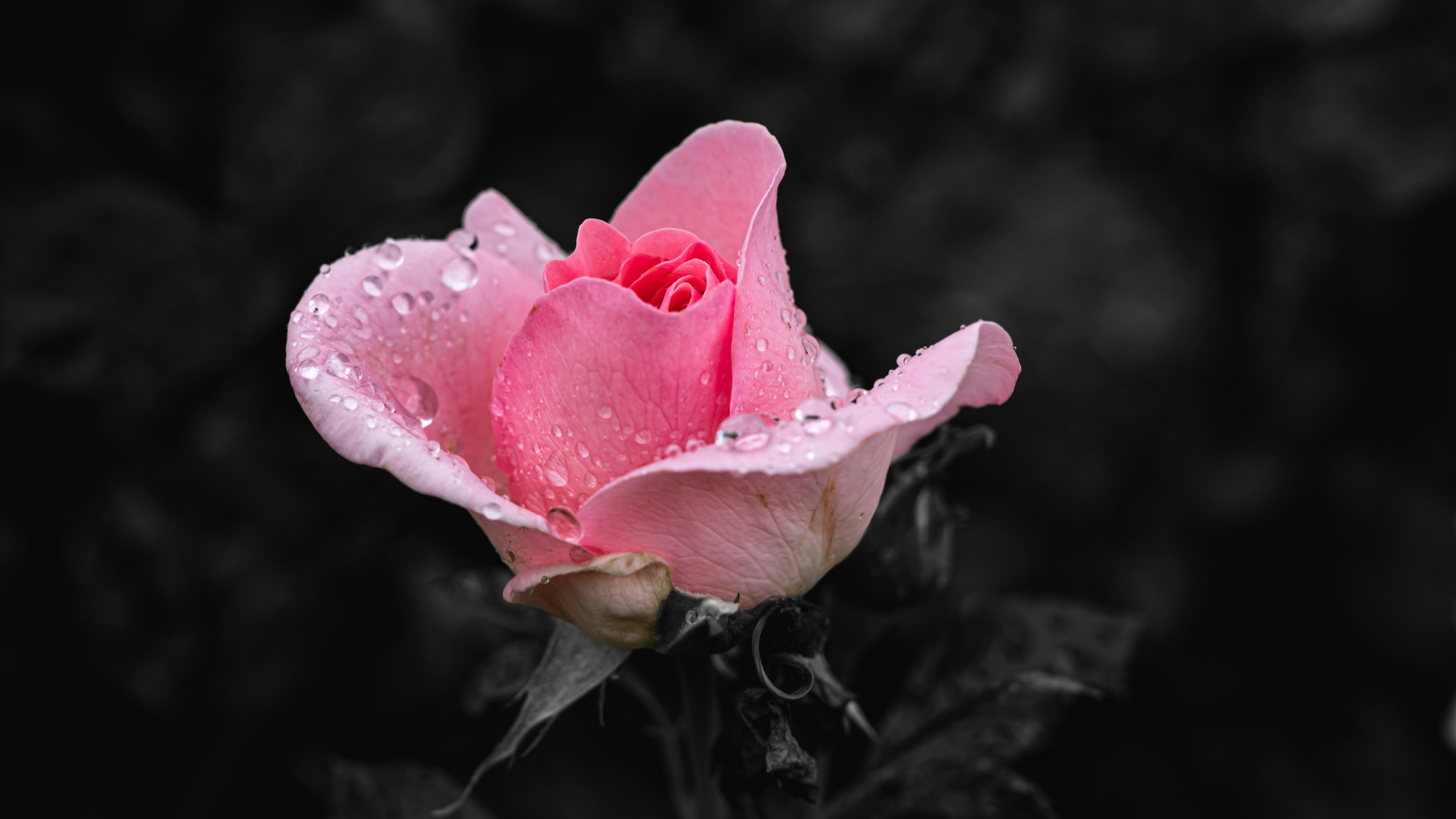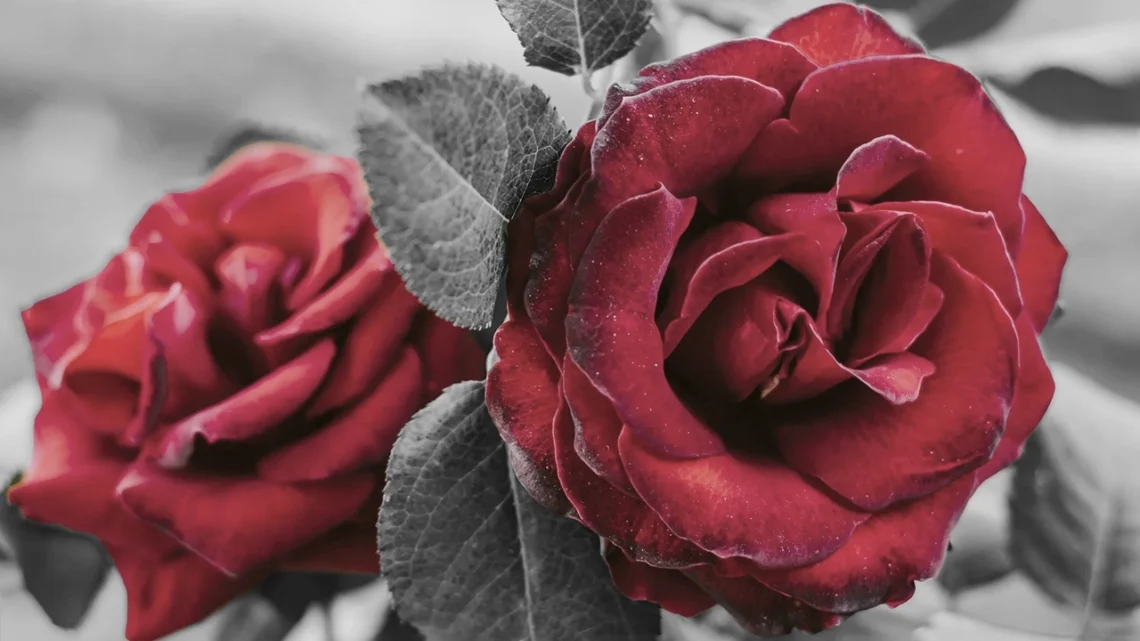Rose’s ancient past
From stories of Cleopatra bathing in petal-infused milk to a Persian princess filling royal fountains full of rose water, so that when she walked through her garden, “drops of rose water would land upon her skin like rainfall”.
This deep and enduring love affair with these flowers, known for their velvety beauty and heady perfume is nothing short of enchanting.
One of the earliest recorded ingredients for beauty and cosmetic treatments, roses have been around, according to fossil evidence, for 35 million years.
 Ancient Egyptians boiled down roses to make them into cosmetic and healing balms, and they infused rose scent into their oils, to cleanse and protect their skin against the dry desert winds.
Ancient Egyptians boiled down roses to make them into cosmetic and healing balms, and they infused rose scent into their oils, to cleanse and protect their skin against the dry desert winds.
Legend has it that Cleopatra soaked the sails of her ship in rose water, and filled her rooms with roses whenever she met with Marc Anthony, believing that he’d later think of her anytime he caught the scent of a rose.
The rose flower is known to be an attribute of Venus, the Roman goddess of love and beauty (Aphrodite in ancient Greece). In later years especially, the rose also came to represent the Roman Empire’s penchant for luxury and excess.
Enormous rose gardens, considered as important as wheat crops, were constructed to lavishly decorate banquet tables, strew the floors, and float in their Falernian wine.
Roman brides and grooms were crowned with roses, as were the images of Cupid, Venus and Bacchus. They were scattered in the paths of victors, or beneath their chariot-wheels.
They were even said to wear rose garlands at their feasts, as a preventative against drunkenness. For them, the rose was a symbolic sign of pleasure.
Rose healing
It was the Ancient Greeks and Romans who were first to classify and document the healing powers of rose for more than 30 ailments, making it a medicinal ingredient for many ancient cultures around the world for centuries to come.
There is evidence of rose water that can be traced back to 1200 BC, to the ancient Mycenaean city of Pylos in Greece where it was traded commercially.
The Greek physician Dioscorides (A.D. 40-90) often used a rose pomade that he made from steeping rose petals in fatty oil.

He also wrote about the rose’s cooling and astringent qualities, adding that the liquor of roses cooked in wine was useful for treating headaches and ailments of the eyes, ears, gums, and womb. He attempted to heal his patients by sprinkling dried, powdered rose petals on food for those who experienced pain in their gums.
The Roman naturalist and historian Pliny the Elder (A.D. 23-79) also described rose as an astringent, writing that the petals, flowers, and heads were used in medicine, and the scent to clear the mind.
But it wasn’t until 10th century Persia that steam distillation and a way to capture the potent intensity of the rose scent was invented.
A single gram of the precious essential oil required two thousand roses, and so signalled the beginning of rose’s rise to prominence in fine perfumes and medicinal treatments for the wealthy.
By medieval times, roses, rose oil and rosewater were highly coveted, and considered so valuable that even certain nobility took to trading roses as legal tender.
Rose’s resurgence
So, after millennia of being upheld by countless cultures as the most exquisite of all flora, why is it then that the rose has spent a large part of the last century being deeply unfashionable?
My answer would be the introduction of synthetics to reduce cost. Today the extraction process for natural rose hasn’t changed since it was first conceived centuries ago. That means it’s still insanely expensive, but synthetically, the rose reminded us of grandma’s panty draw!
Cheaper imitations may smell similar, but something is off, and our noses know it. Because unlike other scents, which can be adequately reproduced, rose resists by its very nature.
The difficulty and cost attached to pure rose oil has not changed much either. Here at Thalia, we have chosen organic Rosa damascena (rose otto).
It hails from the valley of the roses in Bulgaria, undisputed to be the “best” quality rose oil for applications in skincare, due to its soil and climate conditions.
The process of extracting the oil from the petals (one of the rarest flowers in the world) takes 4 tons of roses to make just 1 kg of rose oil. Naturally, this is found within our Awakening Serum.
With over 300 molecules, rose is the flower with the most complicated chemical constitution in the world. A real rose is impossible to mimic, and this is what makes it so precious, because a fake could never deliver any of the time-tested beauty benefits of a true rose.
The soft touch of rose
So why is rose so special in skincare?
Rose is the ultimate all-rounder. A heavy-hitter that is so versatile, it can treat everything from acne-prone skin to mature, sensitive and dry skin with ease. Containing a complex array of vitamins, essential fatty acids, minerals, and antioxidants.
In our experience, no other botanical softens and refines skin texture in quite the same way. Rose is one of our favourite ingredients for restoring the skin barrier, regenerating strength, and both protecting and increasing hydration and lipid levels.
The antioxidants in rose absorb deeply into the dermis layer of the skin, which is especially supportive for mature skin. Due to its unique combination of antioxidants, like citronellol and geraniol, pure rose oil destroys free radicals and slows down aging.
It is now clinically proven to be anti-inflammatory, antiseptic and antibacterial, making it also beneficial for treating acne.
Rose vs acne
When treating acne your first thought might be to reach for a product that dries out your skin to combat the oily surface where acne seems to thrive. However, using this approach can result in dehydrated and over-sensitised skin.
Acne-prone skin needs to be kept hydrated rather than dried out. A lack of moisture can trigger a signal to send more sebum, perpetuating a vicious cycle.
Rose has been proven as an excellent treatment due to its antibacterial, antiseptic and astringent properties, that can effectively reduce bacteria, while still being gentle to sensitive, damaged skin. Its anti-inflammatory action also assists with inflammation and/or soothing redness.
Hydrate and nourish with rose
Roses are hydrators, keeping the skin’s moisture barrier strong
Rose is such a unique plant because it contains so many different nutrients that are specific to barrier restoration, such as B Vitamins, Polysaccharides, as well as lipids and lipid-soluble nutrients like Vitamin E and Palmitic Acid.
Palmitic acid specifically is the unique nutrient that will lock in hydration and prevent trans-epidermal water loss by strengthening our skin’s barrier.

Rose is specific for strengthening connective tissue on multiple levels within the skin. This is a plant that can not only immediately tone and firm, but can also strengthen collagen health over time.
The presence of gallic acid, which is specific to collagen and elastin production, helps with this — along with Polysaccharides, Flavonoids, and Catechin.
Rose is cooling while stimulating movement. This is key for those who experience redness and other rosacea symptoms.
Many would assume that any sort of stimulation would be bad for rosacea, but in fact, stagnation is one of the primary root causes of rosacea. Roses cool down the skin, while gently stimulating blood flow and releasing and hydrating stuck fascia.
Rose’s relationship with vitamins
When we explore the phytochemistry of Roses, they contain many of the major nutritional players that are key to skin health.
B Vitamins: Do you often hear talk about Niacin as being an ingredient added to skincare products in order to reduce inflammation, boost hydration levels and help protect our skin’s barrier? Well if you are using Roses in your skincare, then Niacin is present, along with all the other beneficial B’s and their helpful co-factors.
Vitamin C: Vitamin C and all of its helpful Flavonoids are ever-present in both Rose petals and Rosehips. Vitamin C helps to repair and prevent sun damage. However, it’s even stronger when it’s in its whole plant form because it is more stable alongside its fellow antioxidants. Flavonoids also help to metabolise the C after it stabilises free radicals.
Vitamin E: When you run your fingers over a fresh Rose petal, you may feel a bit of oil or lipids. This is because Roses are a wealth of beneficial lipids and lipid friendly nutrients, such as Vitamin E. Aside from being a common antioxidant, Vitamin E helps to work together with many of the other nutrients in Roses to keep our skin barrier healthy and strong.
PH rose
Rose has a natural tonic and astringent effect on the capillaries just below the skin’s surface, which evens out skin tone and removes excess dirt and oil trapped within pores without disrupting the skin’s pH.
Maintaining proper pH is absolutely essential to healthy skin. Our skin has what is called an ‘acid mantle’ — a thin layer that naturally fights infection and environmental factors.
The skin’s moisture barrier is a critical part of the immune system and supports the skin in maintaining its proper level of nutrients. If this layer is compromised, the skin’s ability to protect itself decreases.
Pollution, environmental toxins, skincare products that strip this layer, and the sun all play a role in breaking down the skin’s pH balance. The pH of roses is almost identical to that of human skin, making it perfectly suited to skincare.
The beauty of rose
Last but certainly not least, the nerd in me had to include this case study that aromatherapy enthusiasts will love.
A 2011 study conducted in Japan found that inhalation of rose on a regular basis, showed a strengthening of the skin barrier and improvement in trans-epidermal water loss!
One theory is that rose had an effect on our ‘HPA axis’ and reduced chronic stress levels. It is so interesting to see the way scent alone affects our skin’s health.
This makes sense — rose is known to relieve anxiety, and when you are harnessing plants in their purest form, they work on an emotional, psychological and spiritual level.
For me, the rose represents a heart in bloom. It encourages self-love and self-acceptance. The more we can genuinely love ourselves, the better our skin will look.
It may seem woo-woo, but in my experience, this is true. Awakening within us, the magic and beauty in every cell that we have.
To your blossoming xxx




